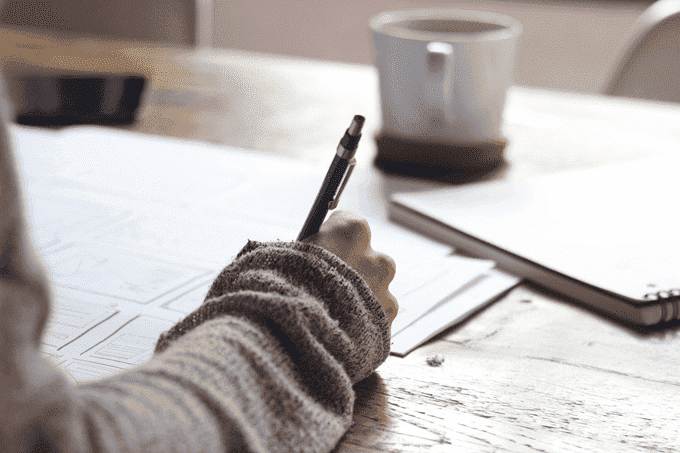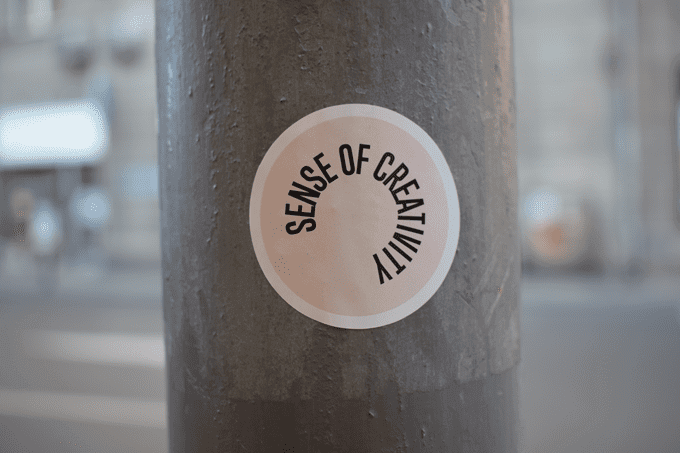With all the hype around video and voice recordings, it’s easy to think that note-taking is no longer necessary. Let’s face it, this is 2019 and digital devices have since remodeled the way we gather information in any research. But, some of us still swear by pen and paper —and this comes with its own set of advantages and disadvantages.
Whether we are conducting a focus group, or we are carrying out in-depth customer interviews. Or, maybe we are conducting a usability test to eliminate the risk of creating a wrong website. Whatever the case, taking notes is, and will remain, a worthy and valuable part of our qualitative research process.
In his book, How to take good notes: The science behind note taking, Angelos Georgakis writes that note-taking is about cognitive science and it is a skill that can become second nature if constantly practiced.
So, to help you get started with note-taking during qualitative research, this article will indicate the importance of note-taking and the steps you need to take.
Why should you take qualitative research notes?
If you can’t remember what you did a fortnight ago, what makes you think you’ll remember the words said by each and every person you interviewed during your research? Taking notes allows you to capture the precise details you will need to improve your product going forward.

In most cases, we all rarely write what we don’t understand, isn’t it? If you write it down, then the chances are that the brain comprehended it first, and integrated it in a way that is understandable. This is something that can’t be guaranteed when using digital devices, and in this regard, Ayat Shukairy says:
Don’t underestimate the use of the good old pen and paper to capture information during usability tests or customer interviews. The way our brains work putting pen to paper is very different than trying to type it up.
Just like technological devices, human memory fails and we can’t depend on it at all times. Chances are (that) your research will tank if you rely on memory and interpretations. Mind you, not everyone has an eidetic memory. This doesn’t necessarily mean that we shouldn’t use devices to record research sessions —you can always revisit your recordings often, but this shouldn’t be done because of poor note-taking.
I get it, though: most of the people find it difficult to keep track of all the words said by participants/customers, and sometimes, words can slip through while the head is looking down. But that makes note-taking all the more special.
Not everything said by your research participants will be useful to you. So, with note-taking, you learn to listen to the most pertinent information in a conversatşon. Or rather, you develop the ability to distinguish what’s important from irrelevant pieces of information. Here is how Peter Rogers, author of Straight A at Stanford and on to Harvard, says it:
You have to make your own condensed notes. You learn from MAKING them. A lot of thinking goes into deciding what to include and exclude. You develop your own system of abbreviations and memory methods for the information.
In journalism, it’s often said that a reporter’s story is only as good as her notes. This premise applies to a lot of the qualitative research we conduct, particular research with active participants (like interviews). Notes can either contaminate your whole research efforts or they can be the saving grace.
But either way, they just have to exist.

Here are some of the tried-and-tested steps that you should consider whenever you intend to take down research notes.
Step 1. Preparation
As the inventor of the telephone, Alexander Graham Bell once said, “before anything else, preparation is the key to success.” He might not have been talking about anything to do with taking notes during a usability test, but his statements relate to everything to do about it.
Note-taking preparations might sound uninteresting, but they are essential and not optional. In fact, scientists have pointed out that note-taking can be as mentally demanding as it can be for an expert who is playing chess. So, as a chess game would demand more adequate preparations, so is note-taking.
At Invesp, preparing and identifying the what and whys of any qualitative or quantitative process is a key factor that helps with the focus and shapes the outcome. There are many things we have to put in order before we begin the research.
Suppose you are planning to take notes during customer interviews, we preview the research questions to see if they are aligned to our goals, and we jot down the timeline diagram —thinking about the “first thought” event1, event 2, the pull and the push factors. This also helps the researchers direct their line of questioning.

If you are analyzing visitor recordings, there also has to be some sort of preparations if you are to take notes. For instance, the preparation may involve drawing a table on your notebook where you record your observations. The table doesn’t have to be fancy, it may look like the one below:
| Video Number | Duration | Device Type | Observations | Notes |
Besides keeping everyone on the same page, this makes it easy to compare notes and to identify the same patterns and issues in the same videos.
Preparation for a usability test isn’t only confined to writing usability tasks, determining the number of participants and recruiting them. It may sound pretty basic, but it is of paramount importance to have a discussion on what to write down during the session. This will help give you a general understanding of what to look out for during the test.
Step 2. Decide on the format to use
This is a bleed-over from step #1, but it has to be given too much attention because it’s important.
You are much more likely to maintain clarity and a clean look using a clear format than writing your observations in a free form. Using a format will allow you to identify and track key areas in your observations at the same time signaling their occurrence in a clear way.

Pen and paper are extremely flexible, so there are a number of accepted note-taking formats available for you:
Outline Format
Being the easiest way of taking down notes, chances are that you have used this format, at some point, but you didn’t realize that it actually has a name. The outline format requires you to take notes in a highly organized and structural fashion —using bullet points, arrows or numbered lists to identify key different items.
Let’s say you are conducting a usability test to find out if users understand the functionality of your website interface. Using the outline format, you can write every major observation you make on the far left of your page and add descriptions of the observations below.
Mapping
Notes taken using the mapping format are so unique and this format is for specific types of research. Customer interviews that require researchers to draw the timeline diagram are perfect for this method of taking notes.
Image Source: JTBD
Important statements uttered by the customers are scribbled in the slots that are in the customer journey map. Taking notes using this format gives researchers a handle on how certain customer events are related.
Data logging
Developed by animal and human behavior students, Data logging is probably the fastest way of taking down notes. This format requires the note-taker to use a form of shorthand, such as single-letter codes, to distinguish the research insights.
Let’s say you are conducting a focus group interviews, and one of your participants is a fast-talker who reveals a string of important points —using the data logging technique, you will just have to note the observation codes for each point —and later after the session, review the codes.
Below is a list of some of the most popular shorthand codes that are used by researchers when taking notes during a usability test.
| Code Class | Code Definition |
| X | Usability problem |
| B | Bug |
| F | Facial expression |
| C | Comment in general by the participant |
| P | Positive opinion by the participant |
| N | Negative opinion by the participant |
| A | Assistance from the moderator |
| I | Design idea |
You are more likely to keep track of the participants’ words if you are using this format.
Step 3. Focus on new and relevant points
When taking research notes, your focus should be on the new and relevant notes, this then begs the question: What determines the relevance of points?
The relevance of points in research is steered by the research objectives. If you have a good idea of what exactly you want to explore or learn, then the points you jot down during your research should help you attain that goal. If it will be useful later, then it is relevant.

The essence of note-taking is summarizing key concepts that are more likely to be of use later. Trying to capture every word said by your participant(s) leaves no room to recognize the new and the relevant points. Stick to the salient points, don’t write everything.
In his book, The Bullet Journal Method: Track the Past, Order the Present, Design the Future, Ryder Carroll says,
The more content you try to capture during a lecture or a meeting, the less you’re thinking about what’s being said. You burn through most of your attention parroting the source.
If you focus on capturing the important notes, you won’t have to wade through the irrelevant notes to bring out the few nuggets of relevant information —and that saves you time.
Step 4. Write in your own words
The Feynman note-taking technique explains that only in the process of converting the speaker’s words into your own words, will you understand what they are talking about. Taking notes when observing users in a usability test usually requires one to paraphrase.
As you put your findings in your own words, to save time, you avoid writing in complete sentences. You can avoid missing out on some of the important points if you use a shorthand style of writing.
So there is a great need to paraphrase what is being said and you can also make use of the data-logging technique.
Step 5. Label your Notes
One area in which one can particularly tend to forget when taking down research notes is labeling them. This might sound insignificant, but clearly labeled notes save a lot of stress and time, especially during the analysis. With labeled notes, it’s easy to differentiate and identify points without having to wade through some other scribblings.

Step 6. Have a note-taking partner
Having one person moderate, observe and take notes at the same time isn’t impossible, but it might lead to poor cognitive performance. Ideally, a user test should have two facilitators: a moderator and a separate note-taker. As the moderator helps in facilitating the whole session, the note-taking partner would be observing, listening and jotting down anything that may be of use later.
Parting words…
Taking down notes during any research helps separate the wheat from the chaff, otherwise, you’re better off using recording devices to capture everything. Regardless of the type of research you are conducting, if you are going to take notes, the bottom line is:
- You have to keep eye contact with your users so as to capture their facial expressions as they describe the experience they had when using your product.
- You should pay attention to what the users say, not how they say it.
- To get the user to say more, you should show that what they are saying makes sense nodding at appropriate times.
- Handwritten notes are better when it comes to memory retention than typing notes.
- The sound you make with your keyboard when typing notes may distract your users.
- You cannot control the speed of how your participants speak, so you should focus on the new and pertinent points only.
- For every observation you make, don’t forget to write down the time followed by a short description.
- When you conduct a user test, you probably want to know something about your product, right? So whatever objective you have, your notes should be reflective of your goals.
- Using a format will help you streamline the entire note-taking process and save you much time.
- Paraphrasing, acronyms, abbreviations, and shorthands might help you keep up with the words of your participants. Writing in complete sentences will do you no good.
- And then for the golden rule: you shouldn’t write down every word emanating from your participant’s mouth verbatim. Develop the habit of deciphering between necessary and unnecessary information.j




